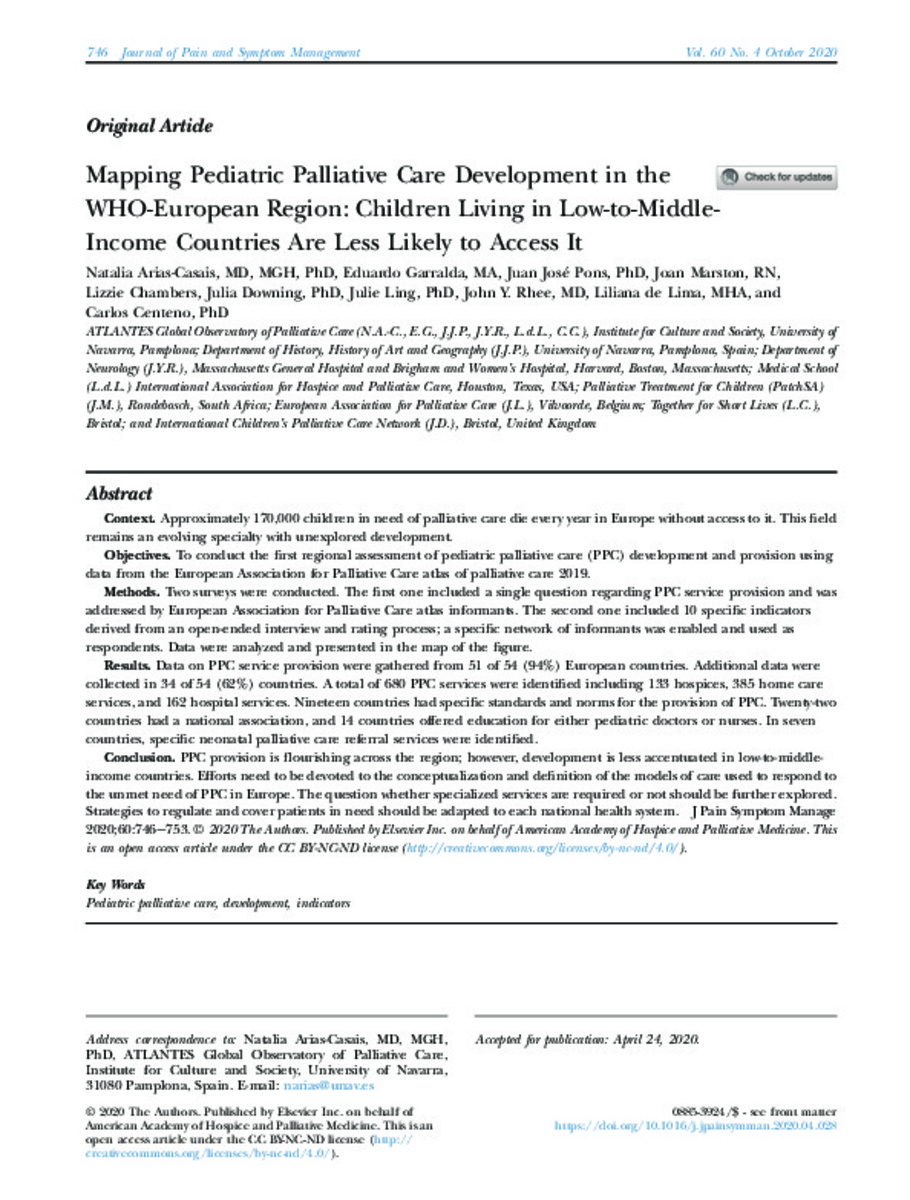Mapping pediatric palliative care development in the WHO-European Region: children living in low-middle income countries are less likely to access it
Palabras clave :
Pediatric palliative care
Development
Indicators
Fecha de publicación :
2020
Nota:
This is an open access article under the CC BY-NC-ND license (http://creativecommons.org/licenses/by-nc-nd/4.0/).
Cita:
Arias-Casais N, Garralda E, Pons JJ, Marston J, Chambers L, Downing J, et al. Mapping pediatric palliative care development in the WHO-European Region: children living in low-middle income countries are less likely to access it. J Pain Symptom Manage. 2020 Oct 1;60(4):746–753.
Aparece en las colecciones:
Estadísticas e impacto
0 citas en

0 citas en

Los ítems de Dadun están protegidos por copyright, con todos los derechos reservados, a menos que se indique lo contrario.











